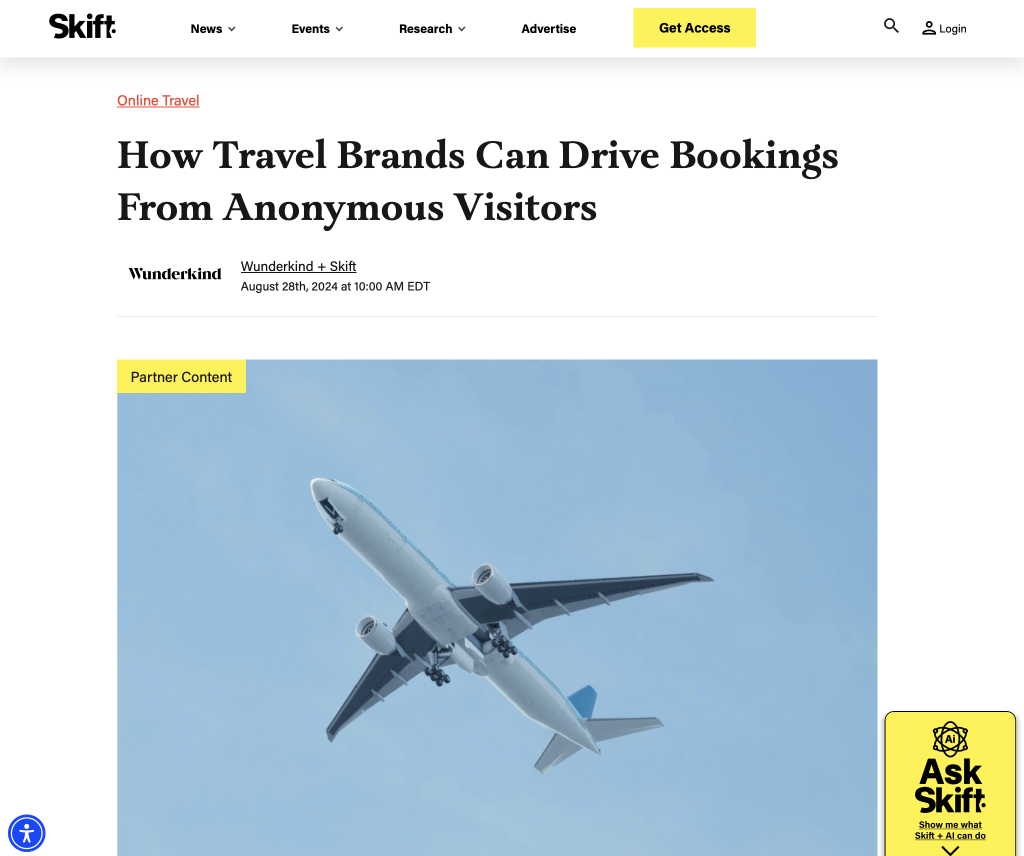Edition #461
Root causes, Perplexity’s ad push, MySpace and how to improve open web ad buying.
I think the root cause of the angst in digital media, is driven by the slower growth. With digital growth dropping below double digit percentages (7.4% this year) that forces change through the whole eco-system. It’s no longer a high growth eco-system.
In the rapid expansion of digital spend, this created (literally) new media, which then needed advertisers behind it. This meant, agencies could always focus on the new, and built up DNA around finding new opportunities, new partners.
However in our slow growth phase, this has meant consolidation, but also less new properties. And in turn, that agencies have had to focus on maximization and margin. Because if you’re buying what you bought last year, you’d better be getting a better price/improvement.
It’s this one simple fact that can explain a lot of angst in the digital media landscape. And worth keeping in mind. It also explains a lot of the complexity, digital is now the norm. In a quick 15 years, it’s gone from a brands first time doing digital, to the norm.
I myself contributed to the charge in New Zealand, for so many of our national brand clients, we were their first meaningful comms work in digital. A real privilege, but also was masterfully tough. I remember doing one pitch with a book publisher, and at the end, they were like oh we could spare $800/month ($10k/year)!
For content though, it remains the way to draw attention from one place to another online. It’s the drawcard and incentive for consumers to swap properties, to click through and to hang around. And at a fundamental level, it’s where brands are going to want to be, for the brand awareness. Other areas are falling to mid and lower funnel objectives. And now creatives are competing against AI, that is trying to fill every niche as fast as possible.
But for branded content teams, you want to show both, how it delivers performance, but captures consumers with content of interest that drives brand association. It’s this art and science that our content model works to address, to fill the gap, to show how you grab attention, but also drive performance.
And this is what everyone is rapidly doing, building custom models in-house, but needing the right tools to get these solutions into market, and models to help translate historical data, into a form that can be predicted upon.
This week we saw this LinkedIn post on how Google undid MySpace, I heard a similar story from another MySpace exec, around how, users would sign up, search for their friends, and the top Google result was on Facebook. So once that came in, it just eroded their growth, and actually drove new users across to Facebook. Imagine that.
And I like this tweet on how low the barriers to success are on social advertising, and how the open web needs to do the same.
Notable stories this week
- Meta is opening up a smidge more to third party attribution.
- Everyone thinks Facebook killed MySpace, but the real assassin was Google.
- Perplexity’s pitch deck offers advertisers a new vision for AI search.
- Taboola expands AI-powered bidding tech to all advertisers.
- Google sought to pay agencies hundreds of millions to sway media buys.
- Meta’s new tool quietly scrapes online data to train its AIs.
- Brands are so scared of culture wars and controversy that it’s ripping apart the media business.
- Publishers promote play.
- Gallery Media Group eyes $50m in revenue as it enters 13th year of profitability.
- Thanks to the DOJ, we now know what Google really thought about Header Bidding.
- Digital news consumption has gotten harder to measure.
- Over a year and a half later, Netflix still has a long road ahead to get advertisers on board.
- Google will pay California’s local news outlets $110m.
- Kielce Brothers sign deal with Amazon’s Wondery worth more than $100m.
Campaign of the week
- How travel brands can drive bookings from anonymous visitors. Wunderkind + Swift.
View all 2024 best campaigns.
Smartest commentary
- “When Mark Penn became Microsoft’s chief strategy officer in 2014 and took on responsibility for its $2 billion ad budget, he was surprised that many companies shied away from advertising on news sites. He rejiggered the media plan and found that ads on news sites actually performed best for technology companies, as readers used them for research.” –BI.
Datapoints of note
- Netflix shared that it has significantly increased its ad sales commitments by over 150 per cent compared to last year with investments from advertisers across CPG, tech & entertainment, auto, QSR, and retail sectors.
- Netflix is lowering ad prices to below $30.
- Google acknowledges that last look “creates a big advantage.” Removing this advantage, according to the documents, results in a 21% revenue loss for Google display ads and a 9% revenue loss for DV360 – 14% combined.
Events
- Attention Happy Hour, next one coming up in September.
View all 2024 datapoints of note.
That’s it for this week.

|
|---|
